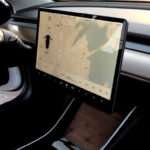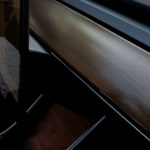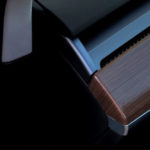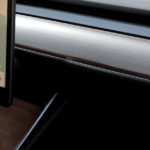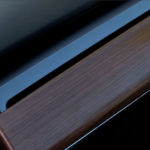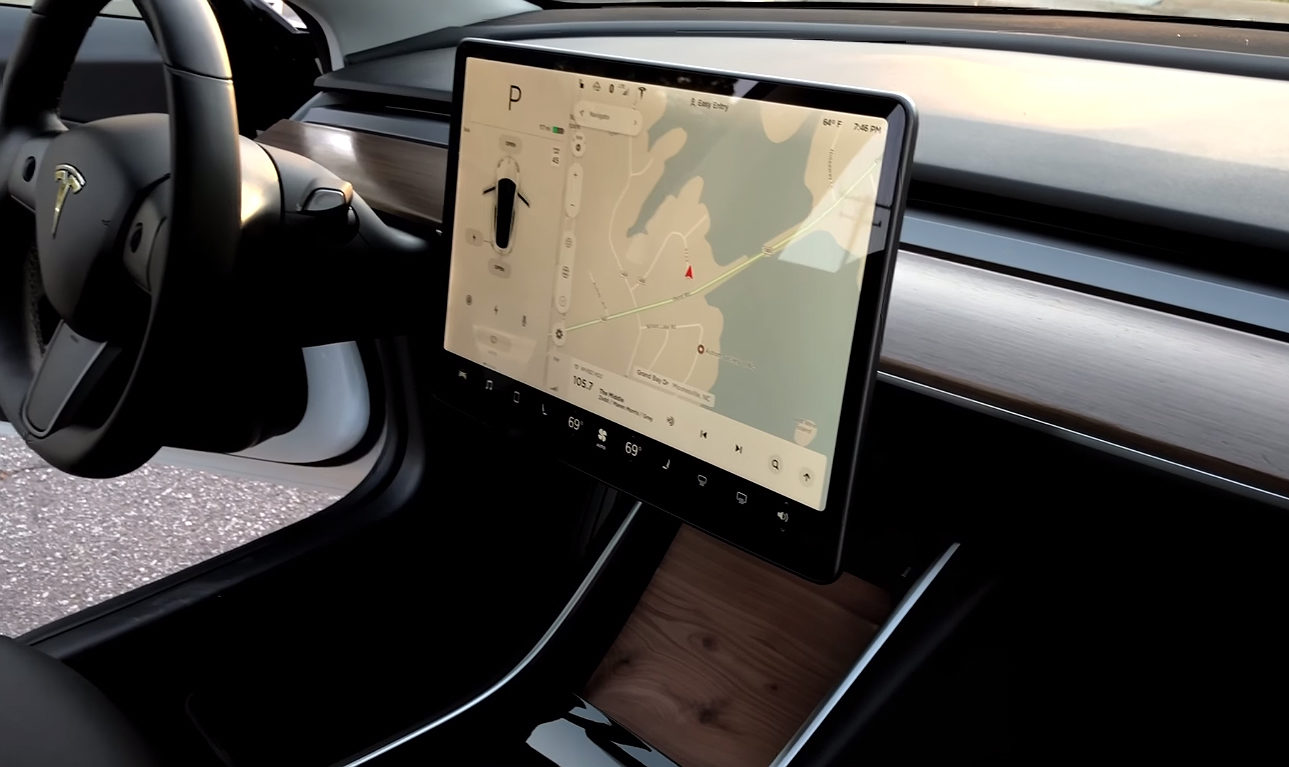
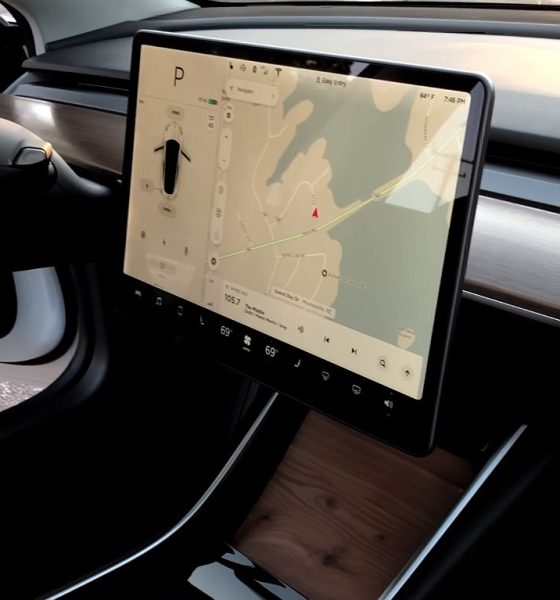
DIY
Tesla Model 3 owner customizes wood trim interior in DIY project
With some carpentry know-how, a Tesla enthusiast was able to transform his Model 3’s wood trim into something incredibly eye-catching. In a recent video, Brian Jenkins, host YouTube’s i1Tesla channel, provided a detailed walkthrough of his latest DIY project — a custom wood-stained finish for his Model 3’s dash.
Brian’s project started with him taking off the Model 3’s dashboard. As could be seen in the video, removing the trim took a considerable amount of prying, but as soon as the entire panel was off, he was able to start working on the wood itself. In a statement to Teslarati, Brian noted that the most challenging part of the entire project was actually prying off the panel.
“The hardest part was figuring out how the dash came off without breaking it. It is not like I can go to Tesla and order a new dash and get it quickly. I thought it was very cool to see how the vent works with very few moving parts,” Brian stated.
The Tesla enthusiast opted to prep the wood using a fine sanding block, starting from one edge of the panel to the other. After the sanding was complete, its surface was stained with an ebony finish. Brian noted, however, the Model 3’s dash was so thin; it was only able to take two coats of wood stain.
One coat of high-quality lacquer later, the Model 3’s wood-stained panel was ready to install. Interestingly, the end result of Brian’s DIY wood trim project ended up with a walnut shade, instead of the black stain he was originally going for. Brian further noted that while the actual sanding and staining didn’t take a lot of time, it still took about a day and a half to complete the entire DIY project.
“It took me about 30 minutes to remove the dash. Sanding and staining was about 30 minutes. But then, it sat overnight to dry before the lacquer was applied. The lacquer was sprayed; and then, it had to sit 24 hours to cure and let off gas, so it did not smell up the car,” Brian noted.
- An image of a DIY wood-stained Model 3 dashboard. [Credit: Brian Jenkins/YouTube]
- An image of a DIY wood-stained Model 3 dashboard. [Credit: Brian Jenkins/YouTube]
- An image of a DIY wood-stained Model 3 dashboard. [Credit: Brian Jenkins/YouTube]
- An image of a DIY wood-stained Model 3 dashboard. [Credit: Brian Jenkins/YouTube]
- An image of a DIY wood-stained Model 3 dashboard. [Credit: Brian Jenkins/YouTube]
While the DIY wood-stained dash took some time to complete, the end result was nothing short of stunning. As could be seen in photos of the electric car’s wood trim, the walnut shade blends perfectly with the aesthetics of the Model 3.
The Tesla community has its own share of talented DIY enthusiasts. Last December, Tesla DIY-er Erik Strait, otherwise known as DÆrik from his YouTube channel, opted to build a fully-working, Supercharger replica for his garage, using molds and fiberglass to create a life-sized model of Tesla’s high-powered charging stations. The end result of that project was pretty amazing.
Earlier this year, we also reported on a Tesla enthusiast’s personal take on the company’s Aero Wheels. Using custom aluminum brackets and sheets of polycarbonate, the Tesla owner, who goes by the handle Evogreen on the Tesla Motors Club, was able to create what could be one of the most clean-looking Aero covers we’ve seen so far.

DIY
Tesla Model 3 pickup “Truckla” gets updates and a perfectly wholesome robot charger
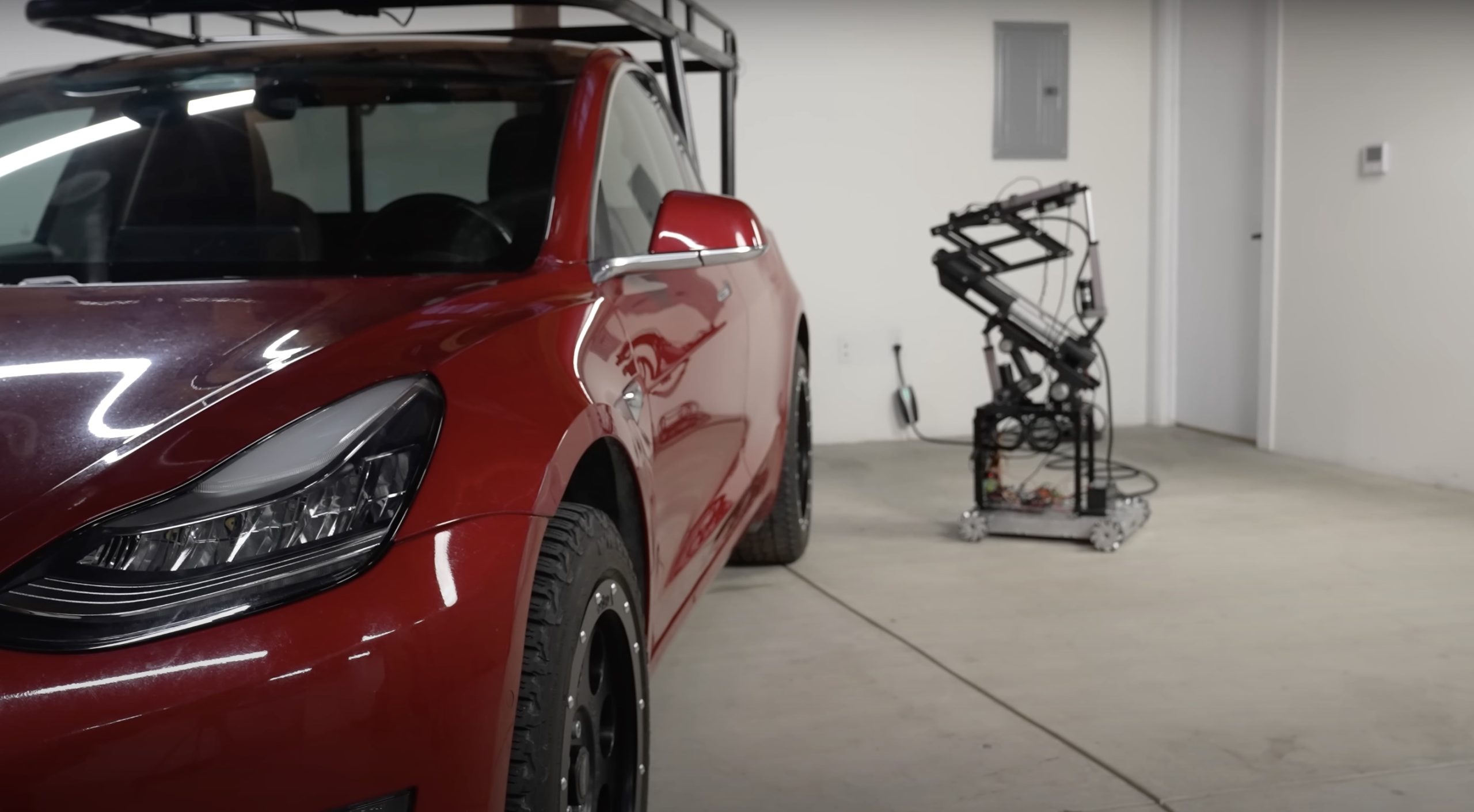
Back in 2019, YouTuber Simone Giertz, the self-proclaimed “Queen of Sh*tty Robots,” created a one-off Tesla Model 3 build that took the automotive world by storm. Fondly dubbed as “Truckla,” Giertz noted that the vehicle was actually her dream car — as crazy as that may sound.
Now almost four years later, the YouTuber posted an update on Truckla. And just like every other big project that one probably started, Giertz stated that she actually stopped working on Truckla when the vehicle was about 80% complete. The car is driving though, but a lot of stuff was not really working very well.
Thus, for her Truckla update, Giertz shared how most of her Model 3 pickup truck conversion was essentially completed. Truckla got a lot of detailing done, she got a slight lift, and she now has a functional tailgate. One has to admit, Truckla’s tailgate is pretty darn cool.
The “Queen of Sh*tty Robots” also opted to give Truckla a friend in the form of an automatic robot charger. Unlike Tesla’s rather interesting snake charger from years past, Truckla’s charger would come in the form of a rover, thanks to her friends at robotics platform Viam. Giertz aptly named Truckla’s robot charger friend “Chargela,” which is an appropriate name for such an invention.
Also true to form for Giertz, Chargela’s first encounter with Truckla was just a tiny bit awkward. One could say that Chargela may have just been a little bit nervous on his first try without human hands helping him. Most importantly, the system did work, so Giertz would likely keep using Chargela for her Model 3 pickup.
Teslas are very tech-heavy vehicles, so projects like Giertz’s Truckla are always remarkable. The fact that the Model 3 works perfectly fine despite having a good chunk of it cut off and turned into a pickup truck bed is mighty impressive any way one looks at it. Overall, Truckla will always be one of the coolest Tesla DIY projects to date, so any updates about the vehicle are always appreciated.
Truckla’s nearly four-year update can be viewed below.
Don’t hesitate to contact us with news tips. Just send a message to simon@teslarati.com to give us a heads up.
DIY
Tesla fan creating ‘CyberRoadster’ using Model 3 Performance parts in epic DIY build
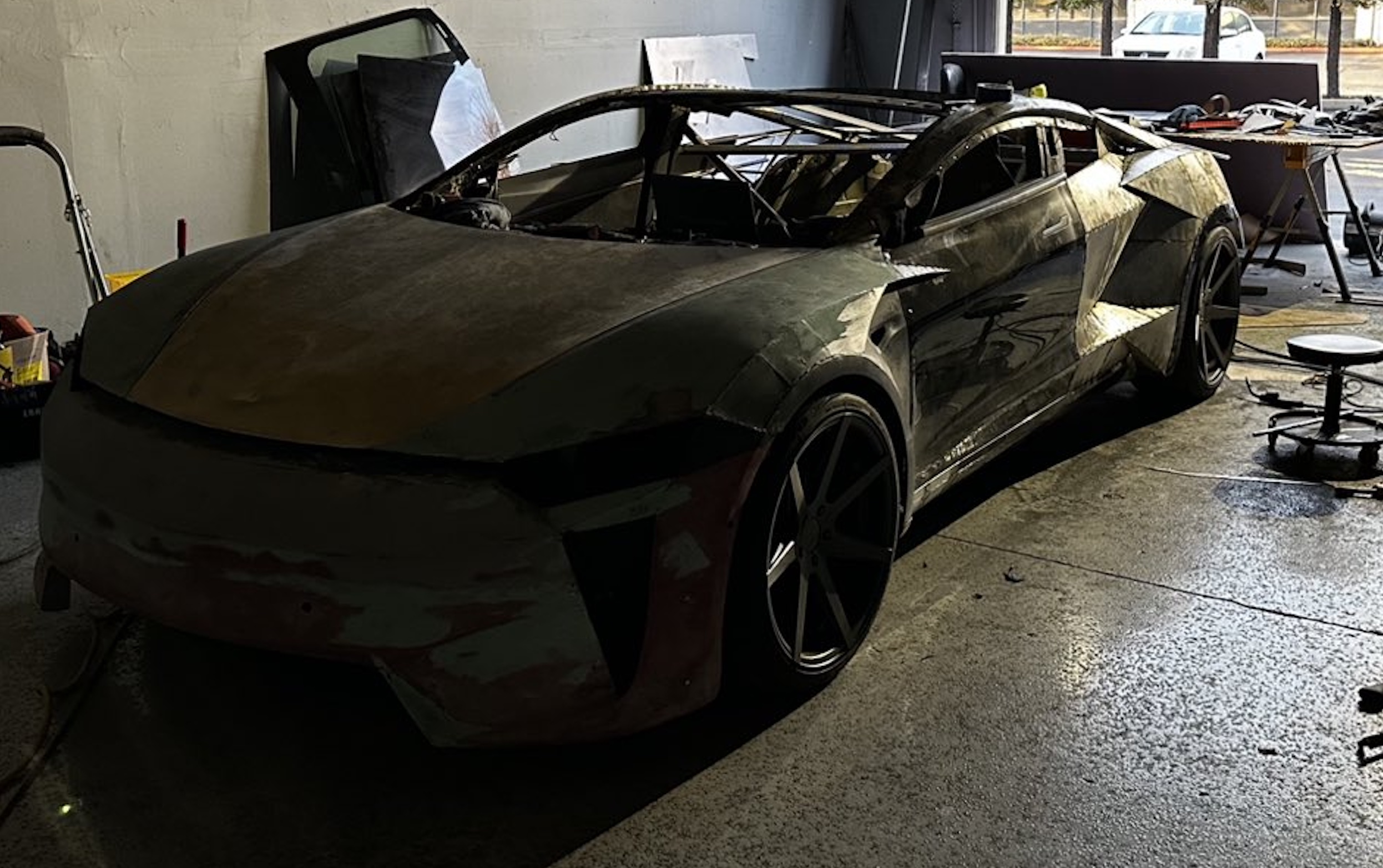
A Tesla owner is taking his hobby and love for electric vehicles to new levels by creating what could only be described as one of the coolest EV-related DIY projects to date. The idea for the project is simple: what happens when you cross a supercar with the Cybertruck? You end up with a two-seater CyberRoadster.
Tesla owner David Andreyev, who goes by the username @Cyber_Hooligan_ on Twitter, has spent the last few months creating a Cybertruck-inspired version of the next-generation Roadster made from a salvaged Model 3 Performance. Starting with a Model 3 Performance is an inspired choice, considering that it is Tesla’s first vehicle that has a dedicated Track Mode.
A look at Andreyev’s YouTube channel, which can be accessed here, shows the meticulous build that the Tesla owner has implemented on the project car. What’s particularly cool about the CyberRoadster is the fact that it’s being built with parts that are also from other Tesla vehicles, like its front bumper that came from a new Model S. Recent videos suggest that the project car’s rear bumper will be from a new Model S as well.
The journey is long for Andreyev, so the completion of the CyberRoadster will likely take some more time. Despite this, seeing the Tesla owner’s DIY journey on such an epic build is more than satisfying. And considering that the CyberRoadster is evidently a labor of love from the Tesla owner, the final results would likely be extremely worth it.
There’s a lot of crazy Tesla modifications that have been done as of late. But some, as it is with a lot of things on the internet these days, have become more silly gimmicks than serious automotive projects. Fortunately, car enthusiasts like Andreyev, who just happen to also love electric vehicles, are taking it upon themselves to create one-of-a-kind EVs that would surely capture the attention of anyone on the road.
Check out the latest video in the CyberRoadster’s creation below.
Don’t hesitate to contact us with news tips. Just send a message to simon@teslarati.com to give us a heads up.
DIY
Tesla owner ‘charges’ Model 3 with homemade solar panel trailer
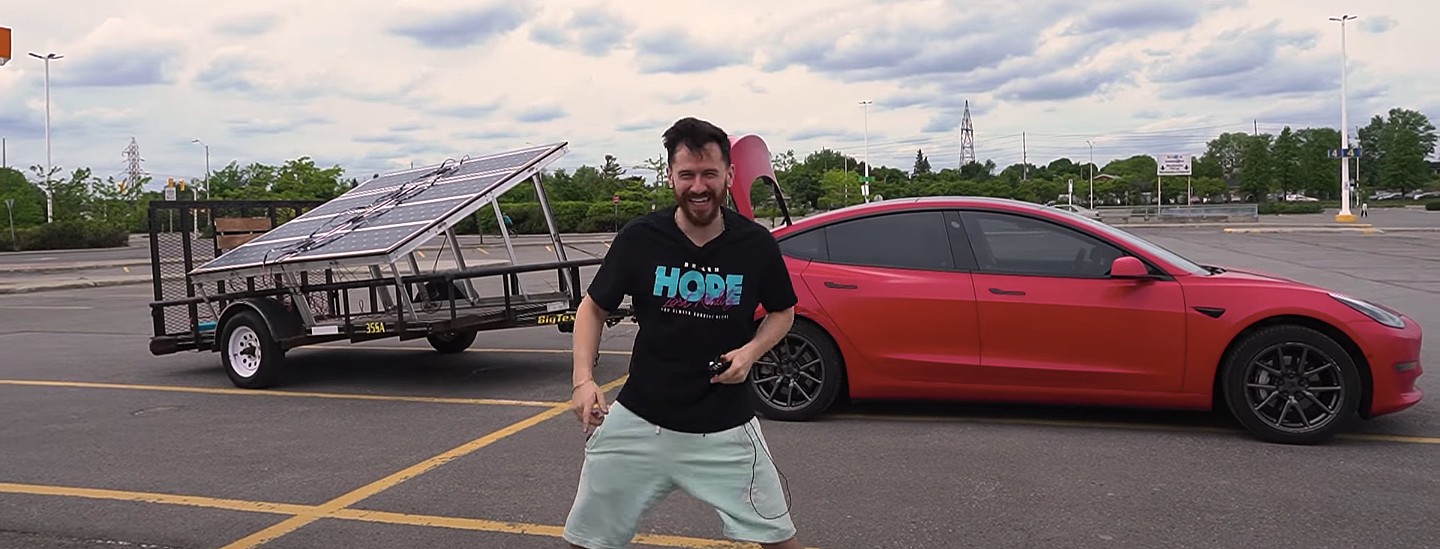
A Tesla owner has demonstrated a rather novel way to charge his Model 3. In a recent video, Sean Callaghan of the ItsYeBoi YouTube channel opted to use a series of off-the-shelf solar panel sheets onto a towable trailer to create a mobile charging unit for his all-electric sedan.
Callaghan planned to use only the sun and the solar sheets purchased from e-commerce platform Wish to charge his Model 3. The solar panel sheets would collect energy from the sun and transfer it to a control panel. The control panels were connected to batteries that would hold the energy—the batteries connected to an inverter, which would then charge the Tesla Model 3.
The entire assembly would provide the Model 3 with about 800 watts of energy on a completely sunny day. However, Callaghan shot the video when weather was overcast, so the entire solar panel trailer build only managed to provide around 300 watts throughout the YouTube host’s test.
To put this into perspective, a 100 volt home wall outlet provides 1.4 kilowatts of power, or 1,400 watts. Therefore, the 300-watt solar panel assembly built by Callaghan was producing less than 25% of the energy of a typical wall outlet. This is pretty marginal compared to Tesla’s 250-kilowatt V3 Superchargers, which provides 250,000 watts, or about 833 times as much power as the makeshift solar panel build.
However, Callaghan’s goal was not to charge the vehicle quickly. He explained the idea came from a previous video where he used a $5,000 Wish-purchased wind turbine to charge his Model 3. He wanted to test the effectiveness and efficiency of the system, which was questionable due to the time it would take to charge the battery fully.
The Model 3 battery pack is 78 kWh, and with Callaghan’s 300-watt system charging his electric vehicle, it would take 260 hours to supply the Tesla’s battery to full capacity.
In the past, electric vehicle enthusiasts have asked Tesla CEO Elon Musk why the company’s vehicles do not contain solar glass roofing, which would charge the car while the owner is driving. Musk has explained that the efficiency of this idea is challenging and likely would not provide an ample amount of range.
When asked about the idea of putting solar panels on the top of Tesla’s vehicles in 2017, Musk responded that the idea was “Not that helpful, because the actual surface of the car is not that much, and cars are often inside. The least efficient place to put solar is on the car.” It also would not be cost-effective for Tesla because “the cost of the panels and electronics, R&D and assembly would never pay for itself in the life of the vehicle, compared to charging from the wall in your garage,” Quartz noted.
That being said, Tesla plans to implement solar panels onto the motorized tonneau of the upcoming Cybertruck. The idea was discussed on Twitter when Musk stated that the optional feature would add “15 miles per day, possibly more” when parked in the sunlight. Also, fold-out solar wings could help capture enough solar energy for 30 to 40 miles a day.
Watch Sean Callaghan’s video of his makeshift solar panel trailer below.
